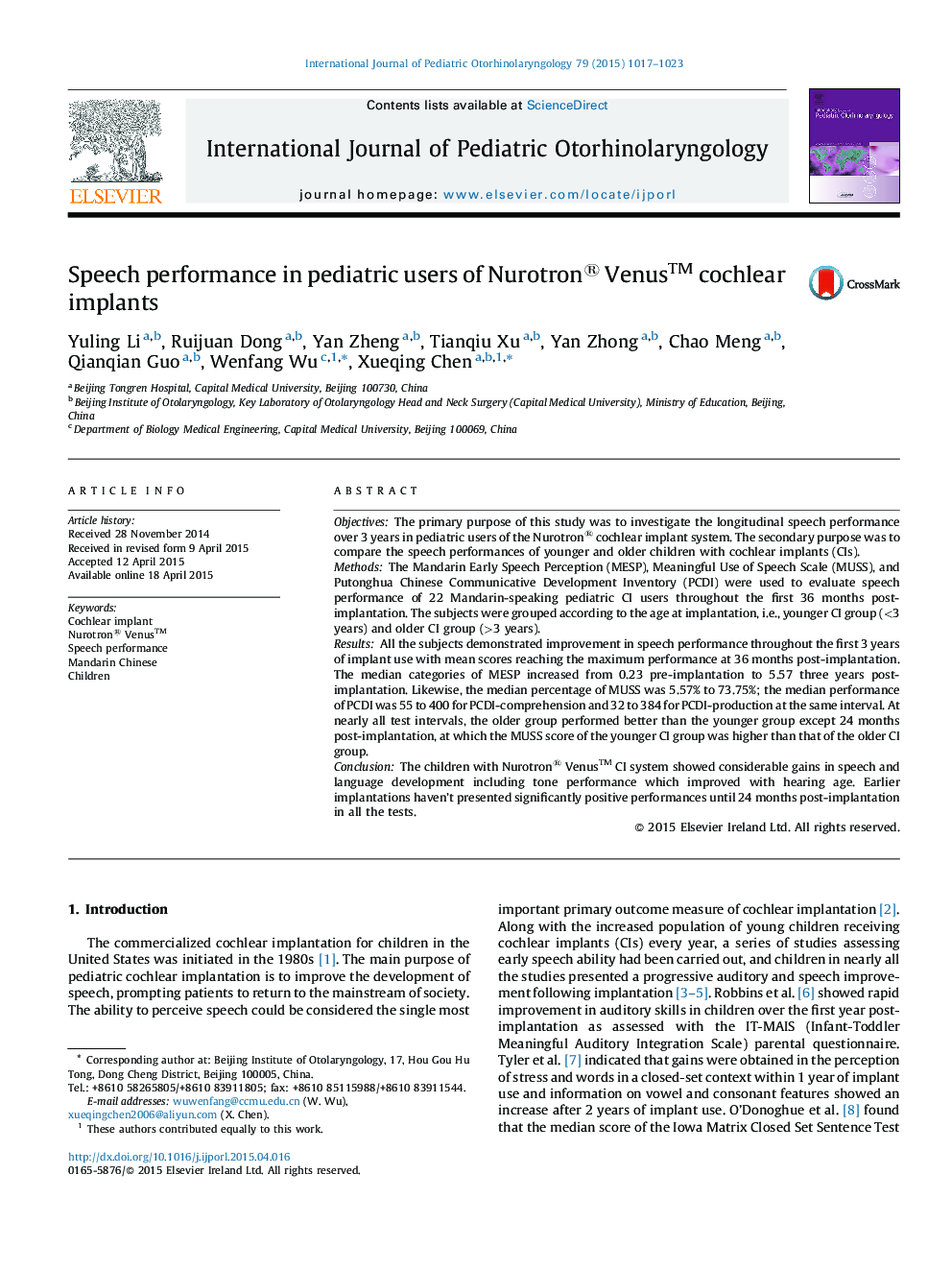| Article ID | Journal | Published Year | Pages | File Type |
|---|---|---|---|---|
| 4112178 | International Journal of Pediatric Otorhinolaryngology | 2015 | 7 Pages |
ObjectivesThe primary purpose of this study was to investigate the longitudinal speech performance over 3 years in pediatric users of the Nurotron® cochlear implant system. The secondary purpose was to compare the speech performances of younger and older children with cochlear implants (CIs).MethodsThe Mandarin Early Speech Perception (MESP), Meaningful Use of Speech Scale (MUSS), and Putonghua Chinese Communicative Development Inventory (PCDI) were used to evaluate speech performance of 22 Mandarin-speaking pediatric CI users throughout the first 36 months post-implantation. The subjects were grouped according to the age at implantation, i.e., younger CI group (<3 years) and older CI group (>3 years).ResultsAll the subjects demonstrated improvement in speech performance throughout the first 3 years of implant use with mean scores reaching the maximum performance at 36 months post-implantation. The median categories of MESP increased from 0.23 pre-implantation to 5.57 three years post-implantation. Likewise, the median percentage of MUSS was 5.57% to 73.75%; the median performance of PCDI was 55 to 400 for PCDI-comprehension and 32 to 384 for PCDI-production at the same interval. At nearly all test intervals, the older group performed better than the younger group except 24 months post-implantation, at which the MUSS score of the younger CI group was higher than that of the older CI group.ConclusionThe children with Nurotron® Venus™ CI system showed considerable gains in speech and language development including tone performance which improved with hearing age. Earlier implantations haven’t presented significantly positive performances until 24 months post-implantation in all the tests.
